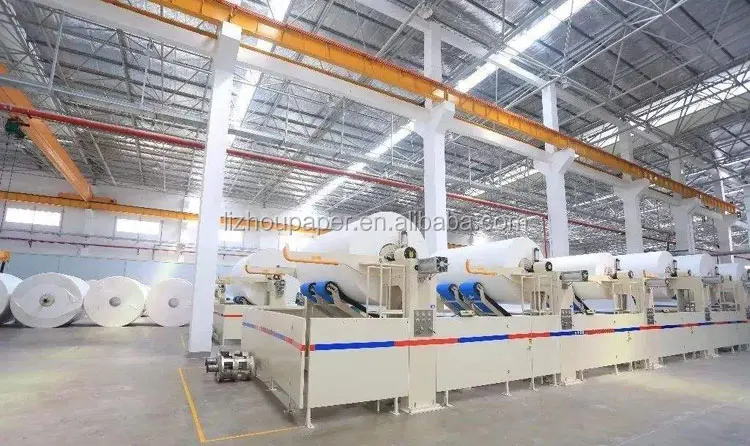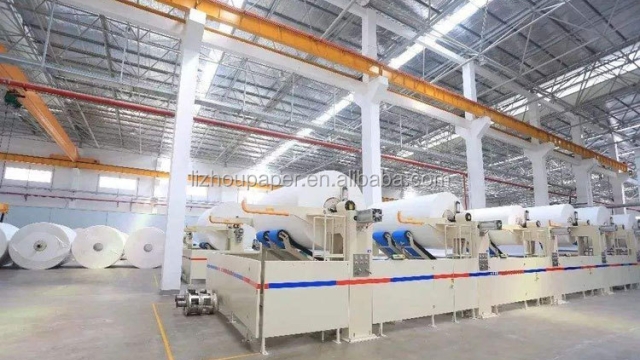Paper Manufacturing Guide: Unveiling the Art of Crafting Pulp to Perfection
In our increasingly digital world, it is easy to overlook the significance of paper. Yet, this versatile material remains a fundamental part of our lives, from the crisp pages of a beloved book to the comforting softness of toilet paper. Have you ever wondered about the fascinating process behind paper manufacturing? Join us as we embark on a journey to discover the art and science behind transforming raw fibers into the paper we know and rely on.
At its core, paper manufacturing is a delicate balancing act, harmonizing nature and technology to create a product that meets our varied needs. It all starts with the humble pulp, derived from various organic sources. From wood and bamboo to recycled materials, these fibers go through a meticulous process of refinement, stripping away impurities and creating a pure material ready for transformation.
Once the pulp is ready, it is time to shape and dry it into robust paper. This is achieved through a combination of mechanical and chemical processes, carefully orchestrated to yield the desired characteristics. Setting off with a beating process, the fibers are manipulated to achieve the right degree of bonding and strength, ensuring the durability required for various applications. Subsequently, the pulp is spread onto a moving screen, allowing the water to drain away, leaving behind a thin mat of interconnected fibers.
With the paper form slowly taking shape, it is time to dry and solidify it into the product we recognize. This is accomplished through a multi-stage drying process, involving heat, pressure, and precision. From massive industrial machines to more compact designs suitable for home use, paper manufacturing lines are designed to create a controlled environment for the fibers to undergo a transformation. The paper emerges, smooth and journey-ready, ready to absorb ink or give us the soft touch we crave.
Within the vast realm of paper manufacturing, one subcategory that stands out is toilet paper production. This essential product demands specialized processing to satisfy our need for softness and strength. While the basic principles of paper manufacturing apply, toilet paper production requires a fine balance of pulp selection, fiber treatment, and layering techniques. Manufacturers employ innovative technologies and quality control measures to ensure that every roll of toilet paper meets our expectations for comfort, absorbency, and sanitation.
As we delve deeper into the intricacies of paper manufacturing and explore its various forms, we unlock a greater appreciation for this unassuming material. From the guiding principles that drive the process to the impressive machinery and techniques employed, there is an artistry that breathes life into every sheet we encounter. Let us embark on this enlightening journey together, unveiling the secrets behind the creation of paper and appreciating its significance in our modern world.
Introduction to Paper Manufacturing
Paper manufacturing is a fascinating process that involves transforming pulp into sheets of high-quality paper. In this guide, we will explore the intricate art of paper manufacturing, delving into the various stages and techniques employed to produce paper that meets our everyday needs. From the creation of basic paper products to the specialized production of toilet paper, this comprehensive guide will provide valuable insights into the world of paper manufacturing.
At its core, paper manufacturing begins with the creation of pulp, a fibrous material derived from various sources such as wood chips, recycled paper, or even agricultural residues. The pulp is carefully processed to remove impurities before it undergoes further treatment. This initial stage is crucial in ensuring the final paper product is smooth, durable, and uniform in texture.
Once the pulp is refined, it is mixed with water to form a slurry. This slurry is then spread evenly onto a wire mesh screen, allowing excess water to drain away. As the water continues to drain, the pulp fibers begin to intertwine and bond together, initiating the formation of the paper sheet. This stage, known as sheet formation, is key in determining the overall quality and characteristics of the paper.
To achieve even greater strength and durability, the partially formed paper sheet passes through a series of rollers and pressurized driers. These additional processing steps help remove any remaining moisture, further compress the fibers, and enhance the overall strength and smoothness of the paper. Depending on the intended use, the paper may undergo additional treatments such as coating, coloring, or embossing.
In the next sections, we will delve deeper into the specific aspects of paper manufacturing, providing a comprehensive guide to help you understand the intricacies of both general paper production and the specialized process of manufacturing toilet paper. Whether you have a general interest in the paper manufacturing industry or are considering venturing into the realm of toilet paper production, this guide is designed to equip you with the knowledge and insights necessary to navigate this art form with confidence.
The Process of Making Paper
To create the perfect sheet of paper, a meticulous and fascinating process takes place. Paper manufacturing involves a series of steps that transform simple pulp into sheets that are ready for various uses, including toilet paper. Let’s explore the journey from pulp to perfection.

-
Preparing the Fibrous Material: The process begins with collecting the raw materials that will become paper. These materials can range from wood fibers, recycled paper, or even agricultural waste. The collected fibrous material is then carefully cleaned and refined to remove any impurities. This refining stage ensures that the resulting paper will be of the highest quality.
-
Making the Pulp: Once the fibrous material is prepared, it undergoes a process known as pulping. During pulping, the material is mixed and agitated with water, breaking it down into fine fibers. This creates a slurry-like mixture known as pulp. The pulp is thoroughly mixed to achieve a uniform consistency, enabling the paper to have a smooth texture.
- Toilet Paper Factory
Forming the Sheets: After the pulp is prepared, it is time to transform it into sheets of paper. This is done through a process called sheet formation. The pulp is poured onto a wire mesh screen, known as a deckle, which allows the water to drain away. As the water drains, the fibers begin to bond together, creating a delicate sheet. Once the desired thickness is achieved, the excess water is squeezed out, and the sheet is transferred to a felt conveyor.
Through these meticulous steps, the art of paper manufacturing brings forth versatile and useful products. Whether it’s guiding us in our daily needs with toilet paper or providing a medium for creative expression, this process ensures that the paper we use meets our expectations of quality and functionality.
Toilet Paper Manufacturing
In the intriguing world of paper manufacturing, one particular aspect that stands out is the production of toilet paper. This essential item plays a crucial role in our daily lives, and understanding the process behind its creation can provide valuable insights into the meticulous art of paper manufacturing.
Toilet paper manufacturing begins with the selection of premium quality raw materials. Softwood fibers, such as spruce and pine, are commonly used as they possess the desired strength and absorbency. These fibers go through an intricate pulping process, where they are broken down into a fine pulp. Water is added to form a slurry-like consistency, resulting in a fibrous mixture ready for the next step.
Once the pulp is prepared, it undergoes a transformation known as sheet formation. The pulp is spread evenly onto a fast-moving wire mesh screen, allowing the water to drain away and leaving behind a delicate sheet of intertwined fibers. This sheet then passes through a series of pressing rollers, which help to expedite the water removal process and enhance the sheet’s solidity.
Subsequently, the sheet moves into the drying phase, where it passes through heated cylinders. These cylinders assist in evaporating the remaining moisture, resulting in a more resilient and stable sheet of paper. Once adequately dried, the paper is then wound onto large rolls, ready to be transformed into the beloved product we know as toilet paper.
The final step in toilet paper manufacturing involves rewinding the large rolls onto individual smaller rolls that can easily fit onto the holders found in bathrooms worldwide. This process ensures that each roll has the ideal number of perforations, allowing for easy tearing and smooth usage.
By uncovering the intricacies of toilet paper manufacturing, we gain a deeper appreciation for the craftsmanship and attention to detail that goes into creating this everyday commodity. From selecting the right raw materials to the precise sheet formation and drying techniques, the art of paper manufacturing truly shines when it comes to producing the perfect roll of toilet paper.




